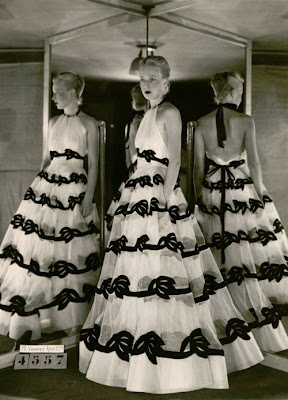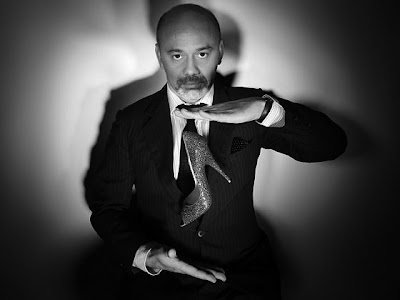 Few designers have the honour of being labelled the "Couturier of Couturiers", but the revolutionary Madeleine Vionnet was one of them. Like the visionaries Gabrielle Chanel and Yves Saint Laurent would after her, Madeleine Vionnet pioneered completely new ideas that would write new chapters in fashion's history.
Few designers have the honour of being labelled the "Couturier of Couturiers", but the revolutionary Madeleine Vionnet was one of them. Like the visionaries Gabrielle Chanel and Yves Saint Laurent would after her, Madeleine Vionnet pioneered completely new ideas that would write new chapters in fashion's history.Madeleine Vionnet founded her fashion house in Paris in 1912, on the rue de Rivoli. She later moved it to avenue Montaigne, but both are iconic Parisian addresses.
Vionnet's avant-gardism saw her inventing the bias cut, her greatest contribution to fashion design. Cutting patterns along the bias forces the fabric to cling to the body and move with it - a "trick" John Galliano champions today - creating Vionnet's trademark look of draped, form-conscious clothing that was sleek, flattering, and body-skimming.
 If you look closely at a Madeleine Vionnet evening dress, especially the beaded ones, you could be forgiven for thinking it was a red-carpet Versace gown. Such was Vionnet's talent for being ahead of her time: eschewing corsets, padding, stiffening, and anything that distorted the natural curves of a woman's body, her clothes were famous for accentuating the natural female form.
If you look closely at a Madeleine Vionnet evening dress, especially the beaded ones, you could be forgiven for thinking it was a red-carpet Versace gown. Such was Vionnet's talent for being ahead of her time: eschewing corsets, padding, stiffening, and anything that distorted the natural curves of a woman's body, her clothes were famous for accentuating the natural female form.Vionnet was always conscious of women’s bodies. She dispensed with corsets and other constricting garments and used barefoot models to present her first solo collection. Not until Gabrielle Chanel's first collections appeared, would high fashion be so comfortable and liberating. Though simple, Vionnet's dresses were never plain; the use of a Cartier necklace as a halter strap is a classic Vionnet innovation.
This original combination of comfort and glamour made Vionnet's clothes a favourite among Hollywood royalty - Marlene Dietrich, Greta Garbo, and Katharine Hepburn were all fans.
Vionnet's mastery of sinuous line, proportion and, above all, how to dress the liberated and dynamic female body, would influence generations of fashion designers, including Cristobal Balenciaga, who like her had an essentialist viewpoint. He considered Vionnet as a mentor.
 In a long list of firsts, Vionnet was also the designer who created the one-seam dress, an example couturiers such as Balenciaga, Azzedine Alaïa and Yohji Yamamoto have attempted to develop ever since.
In a long list of firsts, Vionnet was also the designer who created the one-seam dress, an example couturiers such as Balenciaga, Azzedine Alaïa and Yohji Yamamoto have attempted to develop ever since.



